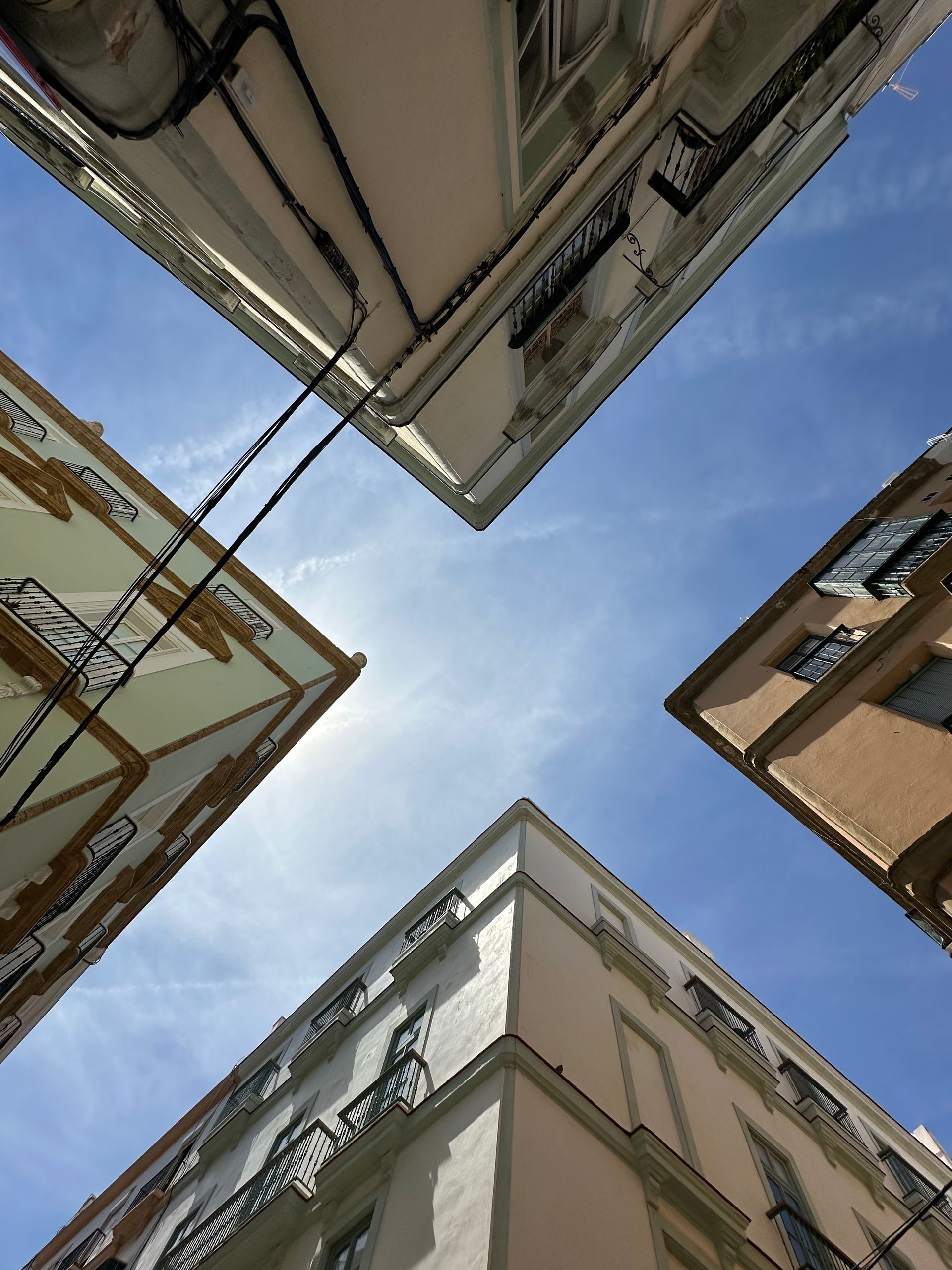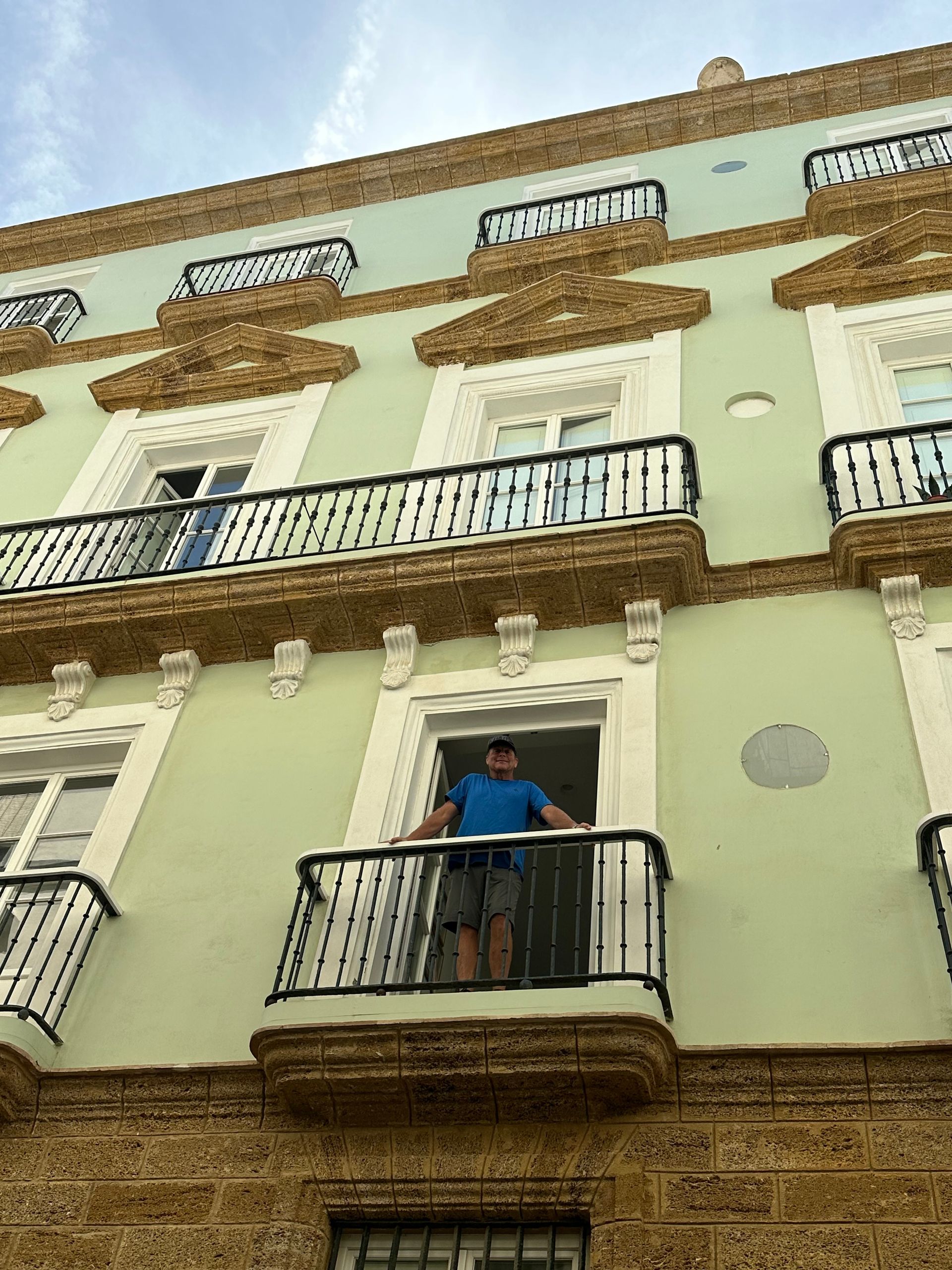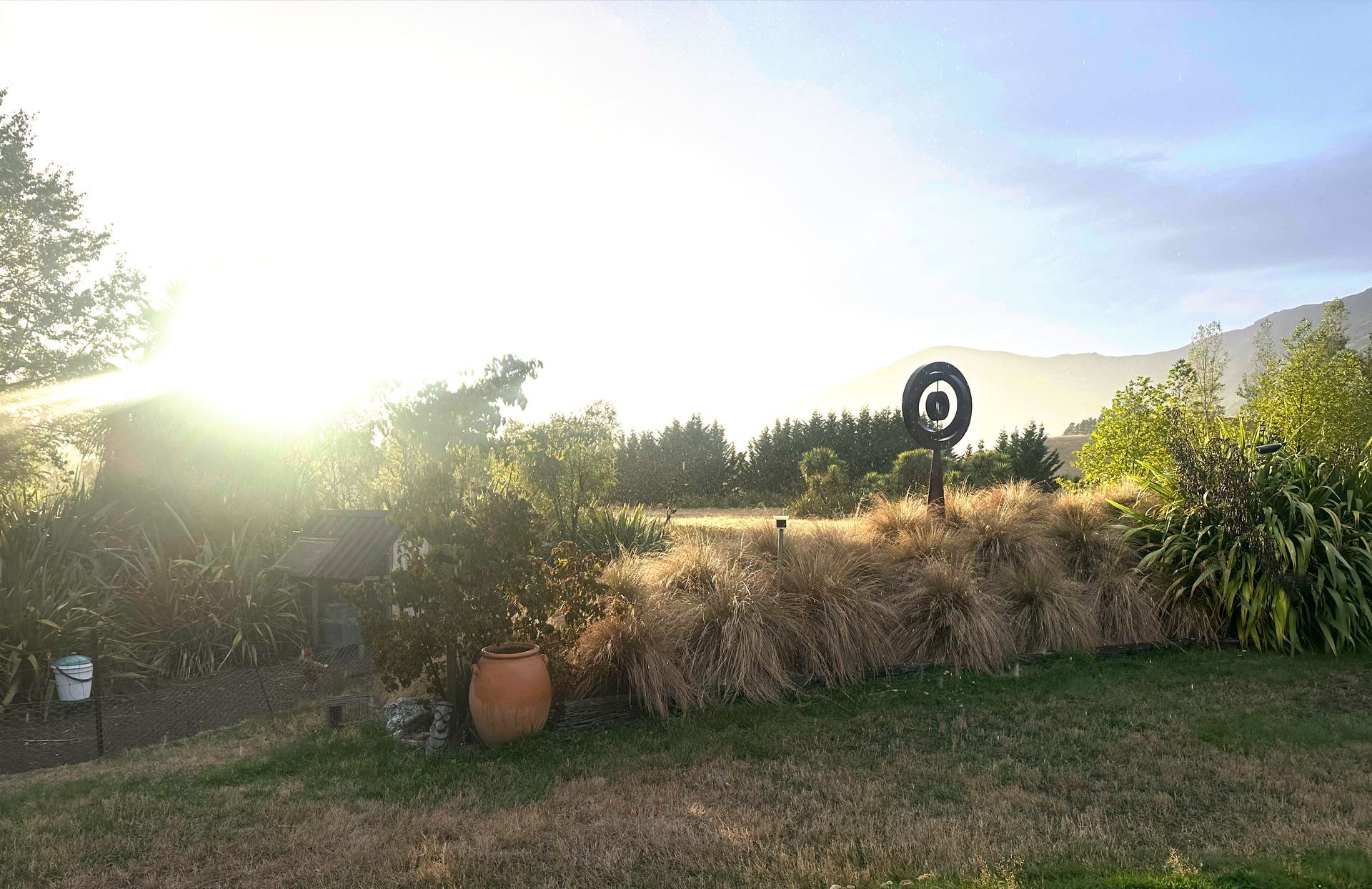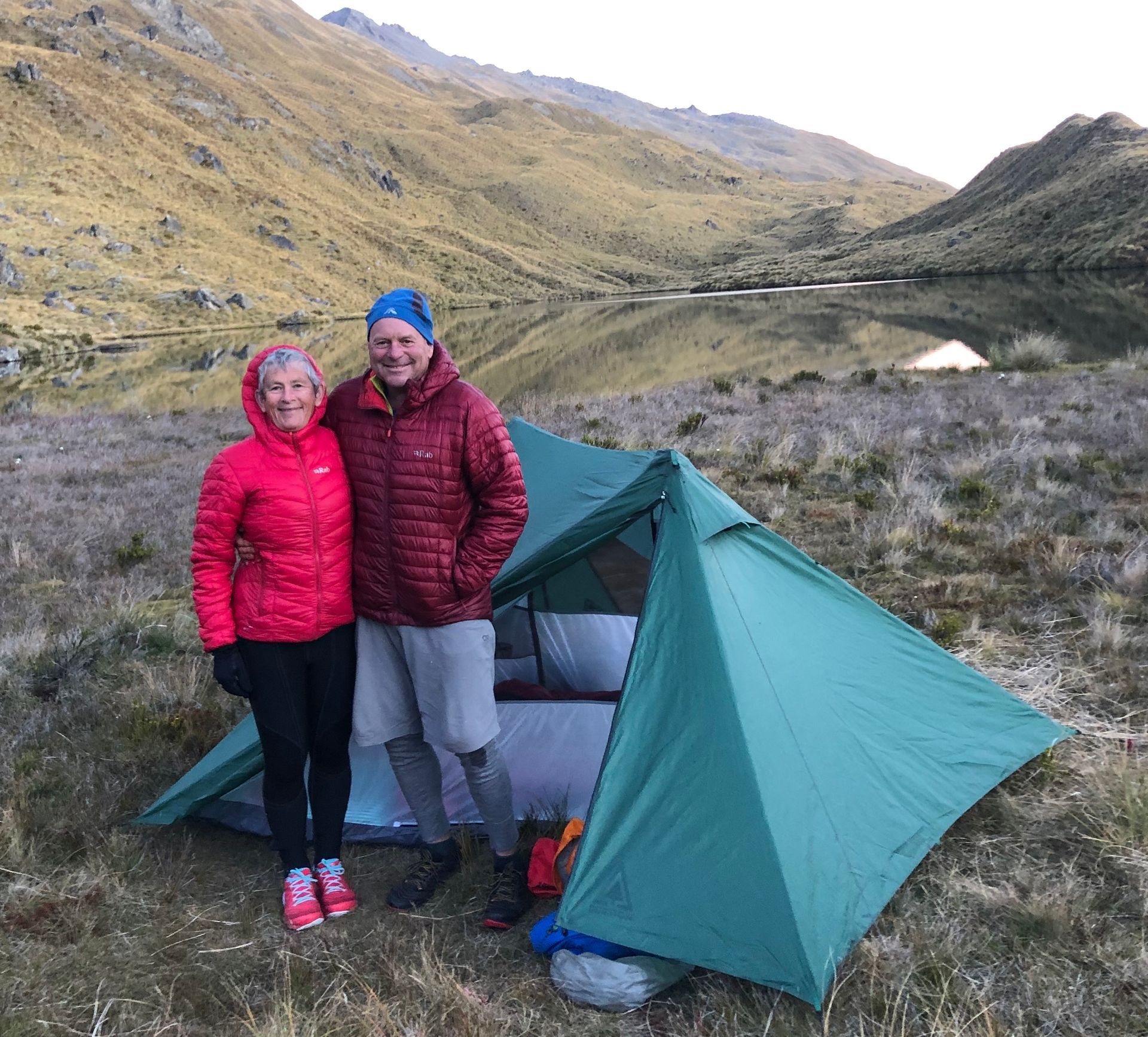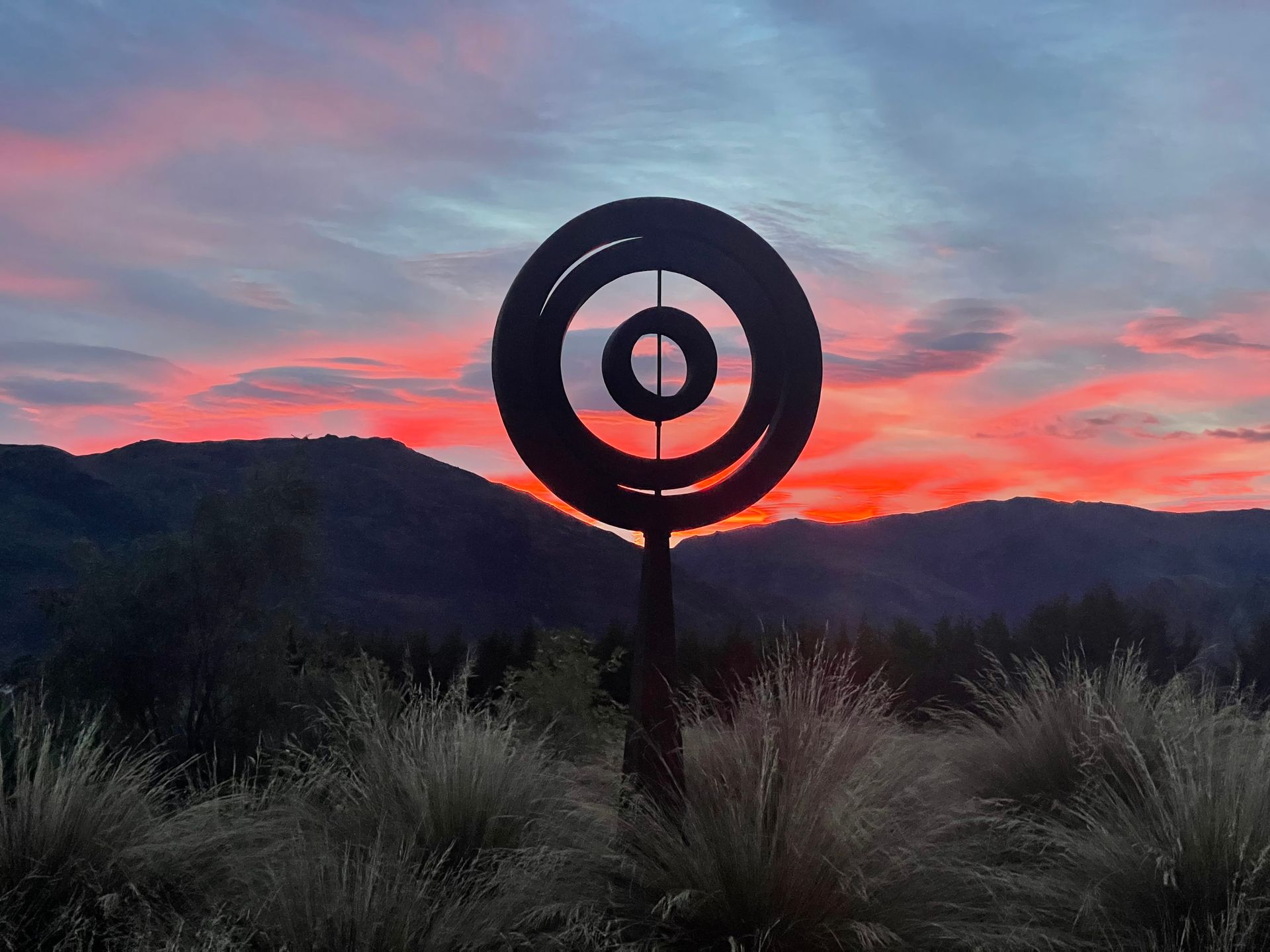Coffee & Cadiz
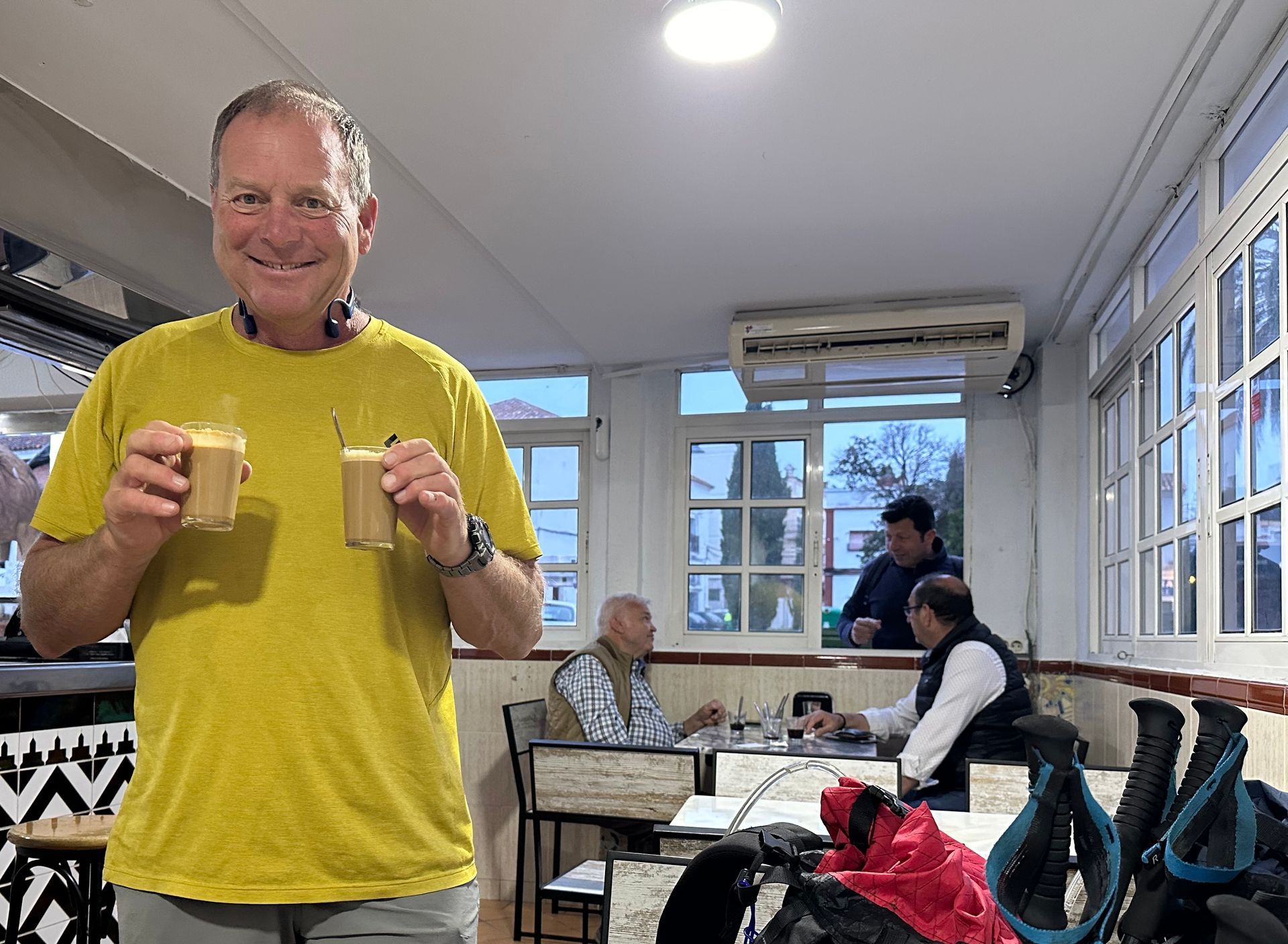
Chris's eyes are almost glittering as he secures his morning coffee fix
I'm back in New Zealand in person but not completely in spirit, yet. I'm still comparing how life is lived here to how life is lived where we've been for the last month. Two things I particularly loved about Spain were coffee and Cadiz.
Not that the coffee is bad in New Zealand. How long New Zealand had such a strong coffee culture? Longer than you might think. Mum remembers coffee houses being the bohemian hangout of choice in her University days in the 1950s. The internet agrees with Mum. Apparently, the European influx after WWII (of which Mum and her family were part) brought coffee to New Zealand and a new social culture developed of coffee houses where art and women were welcome as opposed to pubs with the six-o-clock swill and floors that could be washed down with buckets of water. Espresso machines were imported in the 1950s but a lack of parts and repair expertise meant the machines moved out of common usage in the 1960s and did not reappear for twenty years.
Instant coffee remained common (a factory was established in Auckland in 1962). However, I consider instant coffee an entirely different drink to brewed coffee. My student days were fuelled by instant coffee – I got up to thirteen cups a day during my BScHons which left me jittery and sleepless. Sleepless can be a good thing when you are trying to finish a thesis!
By the mid 1990s, New Zealanders were sourcing coffee machines from Australia and coffee beans from New Guinea and Indonesia – places more accessible than Europe where Italy ruled the coffee realms. Italians led the world in espresso coffee from the late 1800s. France disputes this, in a similar vein to the NZ-Australia pavlova debate. And, it turns out, there is also an NZ-Australia coffee dispute – who invented the flat white? New Zealanders claim the Flat White was the result of a ‘failed cappuccino’ at Bar Bodega in 1989, while Aussies argue the real Flat White was first available at Moors Café in Sydney. The truth is...NZ will always be morally superior to Australia because we didn't do the underarm bowl.
Today, New Zealand is a mecca of locations for coffee lovers with a plethora of coffee options (to the point you can be overwhelmed by choice). Going out for a coffee with lovely creamy froth on top has become an everyday pass time and quite an expensive one, given it's easy to spend $6-7 on a coffee. This was an eye-opener for us in Spain – coffee doesn't have to be expensive. A coffee in Spain generally cost 1.25 euro, equivalent to 2.20NZD. Adjusting for the difference in the average wage in Spain vs NZ, that would be 3.30NZD for a coffee. Sure, the Spanish coffees were smaller, but do we really need huge bowls as well as options to order even bigger ones? What it seemed like in Spain was that both coffee and beer (which were similarly priced in bars and restaurants) were more financially accessible to the public than they are in NZ. Or at least more accessible without having to mortgage an arm or leg to get a daily fix.
Partially linked with affordable drinks, was the street culture in Spain which was particularly notable in Cadiz (on the western coast of southern Spain). Cadiz has to rate as one of the most attractive cities I have had the fortune to visit. Just about every street in Cadiz ended in a plaza. So, whichever street you went down, you were drawn to a square where people sat on benches or in bars and cafés, drinking, chatting, watching their children on rollerblades hare in mad circles around the trees and the pigeons, or chase after soccer balls, wearing tutus or football shirts and boots. Every evening of the week, groups converged, mingled, departed. Hanging out in the plaza appeared integral to the Cadiz way of life.
The plazas were within walking distance of people's homes because people live in four storey apartments lining the cobbled streets. The narrow streets keep the city cool in the summer sun and high density living means inhabitants can easily walk to school, work, supermarkets, and other shops. I'm sure there are downsides to Cadiz we would learn about if we spent more than a week there, but in a short stay the layout of the city of around one hundred thousand people appeared idyllic, including its location by the sea where bathers swam from golden beaches and sun-worshippers oriented their beach chairs and towels to optimise the rays.
The final notable thing about coffee in Cadiz, and in the majority of places we went in Spain, was the lack of takeaway cups. The absence of takeaway cups felt related to the plazas full of people interacting with one another over a drink. Coffee is not something you grab and run away with. It's something you take time to enjoy with friends and family. [Caveat: there were takeaway cups, but they were rare and only in the few heavily touristed locations we visited.] Related, we noticed the slower pace of life in Spain (and also Norway) as compared to New Zealand, or the UK. We had also noted this in Slovenia and Georgia. Frequently there was a queue at a shop counter but the person serving still takes time to have a conversation with the purchaser and the waiting customers do not look inconvenienced but quietly wait their turn. We also noticed how quickly, or slowly, people walked in the different airports.
In New Zealand, there is an outcry when abolishing takeaway cups is proposed as a way to reduce the environmental impact of disposable cups. Café owners panic – how will they survive if people can't buy takeaway coffees? This reminds me of the days when it was proposed that bars would become smoke free and bar owners were panicked that people who smoke would stop drinking alcohol. Surprisingly, smokers didn't stop drinking alcohol. It's not only the owners; customers panic – how will I get my coffee fix? What I posit is we should ban takeaway cups not to save the planet, but to savour life. The 'no takeaway cup' brigade could be a movement to refind joy in going slow, being places with people, rather than rushing on to the next activity. I can already hear the protestations ...it's just a thought.



